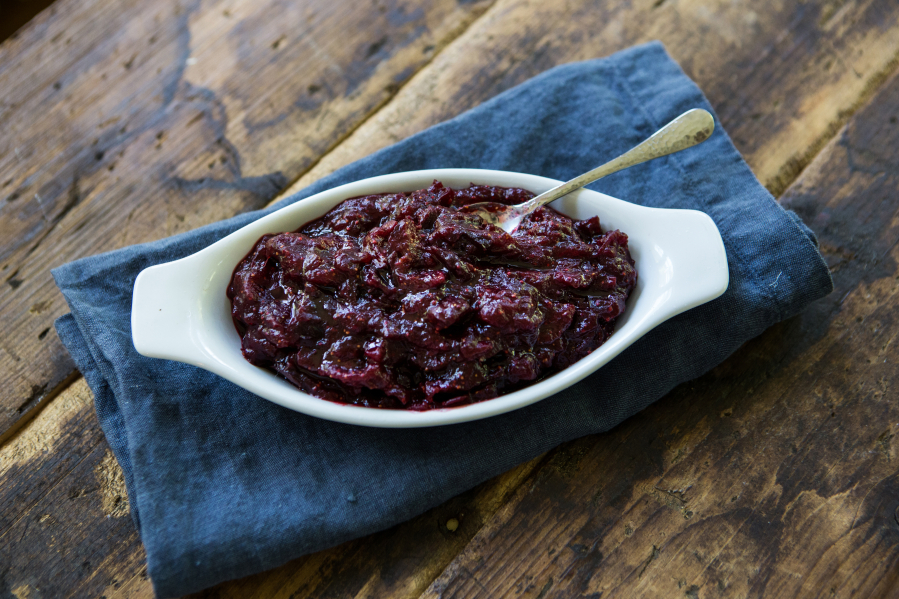If cranberry sauce were a person, it would have a chip on its shoulder (or, more topically, a tinypile of mashed potatoes). Fair enough: The Thanksgiving staple is too often pumped with sugar and smothered in spices or citrus. And that’s when it’s not exiting a can with a brisk shlwwwerrrp.
The canned stuff might have occasional merits, if the occasion is that you’re stranded on a desert island and it washes ashore. But for the Thanksgiving meal, the most sacred of secular holidays built around food, the sauce deserves better. We all deserve better.
Making your own is worth the minimal effort it takes to simmer together a few ingredients into something complex, tart and stunning. I argue that the condiment is an integral player in the meal, as its tangy brightness cuts through the rich, fatty turkey and its carb-laden cohorts. The best part, though – the cranberry on top – is that the sauce is best made ahead of time, allowing flavors to meld, and can be stored for up to a week in the refrigerator (or frozen for even longer).
And so I present my ideal version: Tart, dotted with figs, cooked in wine and spiked with liqueur. (It is the holidays, after all.) I avoided recipes that relied too heavily on cinnamon and the like; as much as I appreciate spices, they make more than enough appearances in other typical dishes. Similarly, while not opposed to adding another fruit, I sought a certain texture – a little chunky and on the verge of being jamlike, but still loose enough to plop on a plate – that is lost when adding fresh fruit such as pears or apples. Above all, the sauce could not be too sweet.



